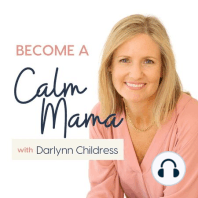28 min listen
Fix It, Change It, Stop It, Solve It
ratings:
Length:
33 minutes
Released:
Jun 8, 2023
Format:
Podcast episode
Description
“Fix it, change it, stop it, solve it” is a phrase I use often in my coaching. When you say it out loud, it captures that feeling we have as parents when our kids behave in a way that leaves us feeling overwhelmed, angry or worried. It’s an emotional and physical response to what our kids are doing, and our brain jumps in and tries to fix, change, stop or solve the situation.Your Kid’s Big FeelingsThe most common time I see parents experience this reaction is during a Big Feeling Cycle. When your kid has big feelings, they might express them in ways that are overwhelming to you. The tendency is often to try to shut down their behavior. But because that behavior is a reaction to how they’re feeling, we end up shutting down their feelings, too.The problem with jumping in to fix/change/stop/solve is that you miss an opportunity to connect with your kids and to help them connect with themselves and learn how to process their own negative emotion.What “Fix it, change it, stop it, solve it” looks LikeHere are some things I see parents do when they don’t like the way their child is expressing their emotion.Minimizing. When our kids are upset, we want to say, “Oh honey, it’s not that big of a deal. It’ll work out.” This sounds like a nice thing to say, but your child is left feeling like you don’t understand. It feels like a really big deal to them. We want to validate the emotion and acknowledge the intensity of their feelings instead of minimizing it. Comparing. This looks like, “This sort of thing happens all the time,” or, “Other kids don’t complain about this,” or “This wasn’t a big deal to your brother.” It happens when you think their feelings aren’t warranted or justified. We’re trying to get them to think and feel differently but, again, we’re doing it by shutting down their feelings. Ignoring. There might be times when you need to take a break to calm yourself before dealing with a situation. Ignoring is different. This is another way of shutting your kid down, and it makes them feel unheard, unfelt, unseen and unvaluable. Your child might think, “Mom only wants to talk to me when I’m happy.”Talking about their feelings is how they’ll learn to deal with them. Weaponizing gratitude. Gratitude is an incredible emotion. I love it. Weaponizing gratitude is when we use it to bypass negative emotion. You cannot get rid of sadness by thinking grateful thoughts. We have to feel the sadness (or anger or worry) and acknowledge it before we allow the brain to find another perspective. Indulging. Sometimes, you might try to change the circumstance to make your kid feel better. Maybe you tell them they can skip practice or promise to go get ice cream afterwards. Instead of letting them feel upset, indulging tries to give them a positive feeling so they forget about the uncomfortable feeling. Logic-ing. This looks like giving lots of facts, trying to logic them out of their feelings or explaining why the situation is their fault. Facts are facts, but giving people more information doesn’t solve feelings. We can’t think our way to a new feeling. We have to feel our way through it. Shutting down. When your emotion (anger, fear, sadness) gets bigger or more intense than your child’s, it’s common to try to shut them down. You have a big reaction to their big feelings. This often shows up as yelling or other big noises or movements to try to shift your kid’s behavior. It triggers fear, freeze or faint response or people-pleasing. It might work in the short-term, but it isn’t effective in helping your child become an emotionally healthy and self-regulated person.What your...
Released:
Jun 8, 2023
Format:
Podcast episode
Titles in the series (100)
Pause & Reset Your Mind by Become A Calm Mama
